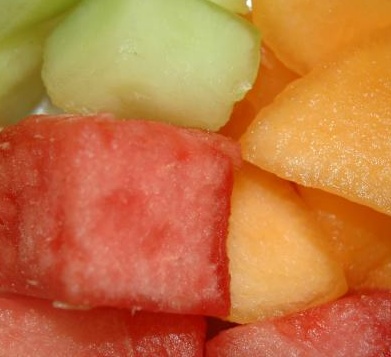
 July 7, 2009, Weslaco, TX — People might smell them, thump them and
July 7, 2009, Weslaco, TX — People might smell them, thump them and
eyeball their shape but it’s the sweetness that lands a melon in a
shopper’s cart.
July 7, 2009, Weslaco, TX — People might smell them, thump them and eyeball their shape but it’s the sweetness that lands a melon in a shopper’s cart.
 |
|
Plant breeders now have a better chance to pinpoint such traits for new varieties, because the melon genome, with its hundreds of DNA markers, has been mapped by scientists with Texas AgriLife Research. That means tastier and healthier melons are likely for future summer picnics.
“This will help us anchor down some of the desirable genes to develop better melon varieties,” said Dr. Kevin Crosby, who completed the study with Drs. Soon O. Park and Hye Hwang. “We can identify specific genes for higher sugar content, disease resistance and even drought tolerance.”
The results were recently reported in the Journal of the American Society of Horticultural Sciences.
Scientists from France and Spain already had completed partial maps of segments of the melon DNA sequence. The Texas researchers connected those segments with new findings in their study to complete the entire melon genome map.
For the study, the Deltex ananas melon was crossed with a wild melon called TGR 1551. More than 100 of the offspring from that cross were grown in the Texas AgriLife Research greenhouses at Weslaco, Dr. Crosby noted.
DNA was extracted from leaf tissue collected 21 days after planting. Results from these tests were integrated into partial maps created by other researchers.
Previous knowledge of melon DNA was like two sets of directions – one from Miami to Houston and the other from El Paso to Los Angeles. That would make one wonder how to get from Houston to El Paso. The study by Dr. Crosby’s group, in essence, devised the path from Miami to LA and all points between.
In addition to the complete map, the researchers located genetic markers linked to fruit sugars, ascorbic acid (vitamin C) and male sterility, which is useful for developing hybrid varieties.
The trio said the genetic map is helpful for future studies in identifying fruit sweetness, quality, size, shape and resistance to disease.
Print this page